A block is attached to a spring and is placed on a horizontal smooth surface as shown in which spring is unstretched. Now the spring is given an initial compression `2x_(0)` an block is released from rest. Collision with the wall `PQ` are elastic.
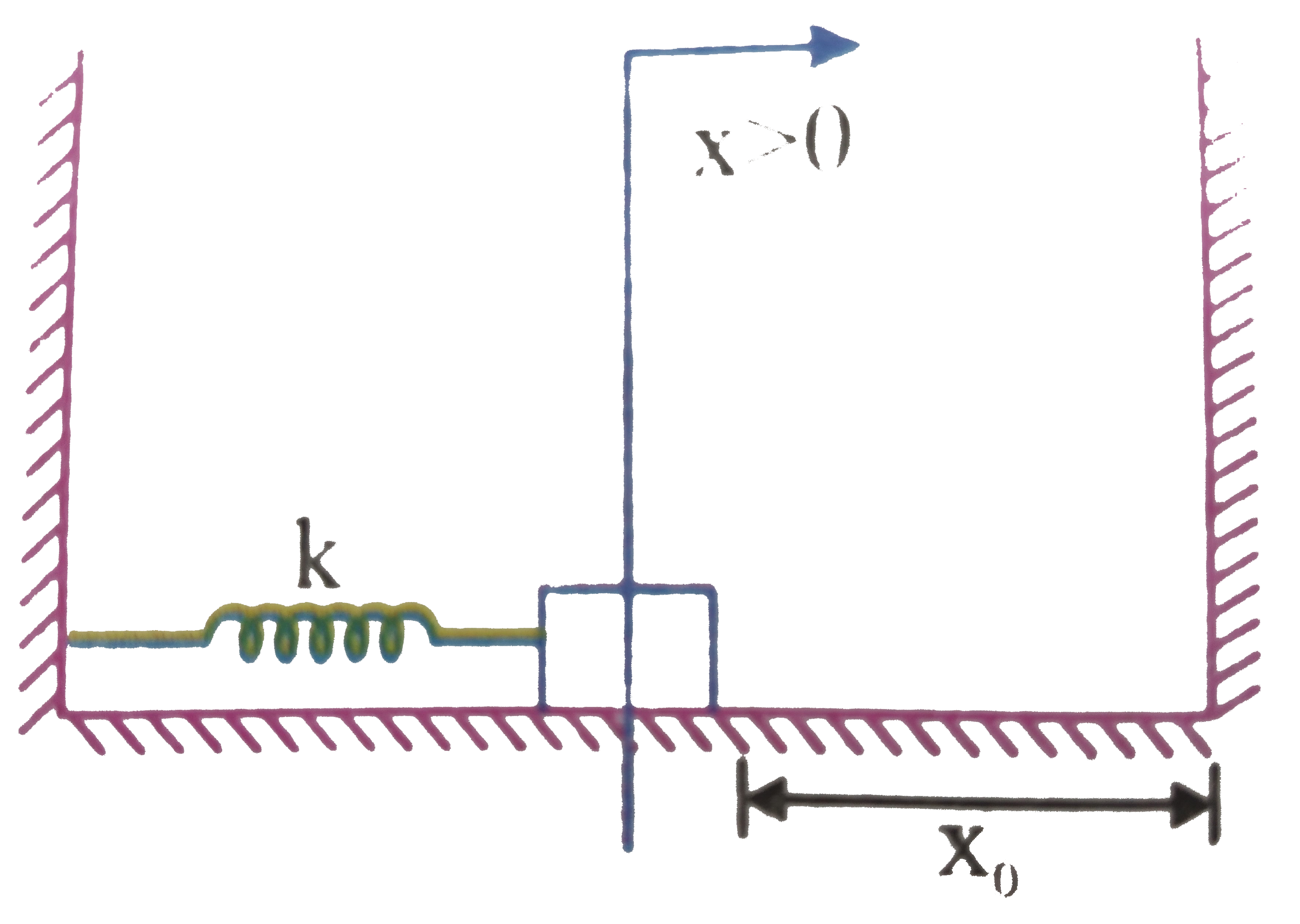
Find the time period of motion of the block:
A block is attached to a spring and is placed on a horizontal smooth surface as shown in which spring is unstretched. Now the spring is given an initial compression `2x_(0)` an block is released from rest. Collision with the wall `PQ` are elastic.

Find the time period of motion of the block:

Find the time period of motion of the block:
A
`(2pi)/(3) sqrt((m)/(k))`
B
`(4pi)/(3)sqrt((m)/(k))`
C
`(3pi)/(2)sqrt((m)/(k))`
D
`(pi)/(2)sqrt((m)/(k))`
Text Solution
Verified by Experts
The correct Answer is:
B
A block is attached to a spring and is placed on a horizontal smooth surface as shown in which spring is unstretched. Now the spring is given an intial compression `2x_(0)`and block is released form rest. Collisions with the wall `PQ` are elastic.

Treat initial position of block as origin `O`. Had wall not been...motion would have been normal `S.H.M.` with amplitude `2x_(0)` say............point, Given `A` and `b`
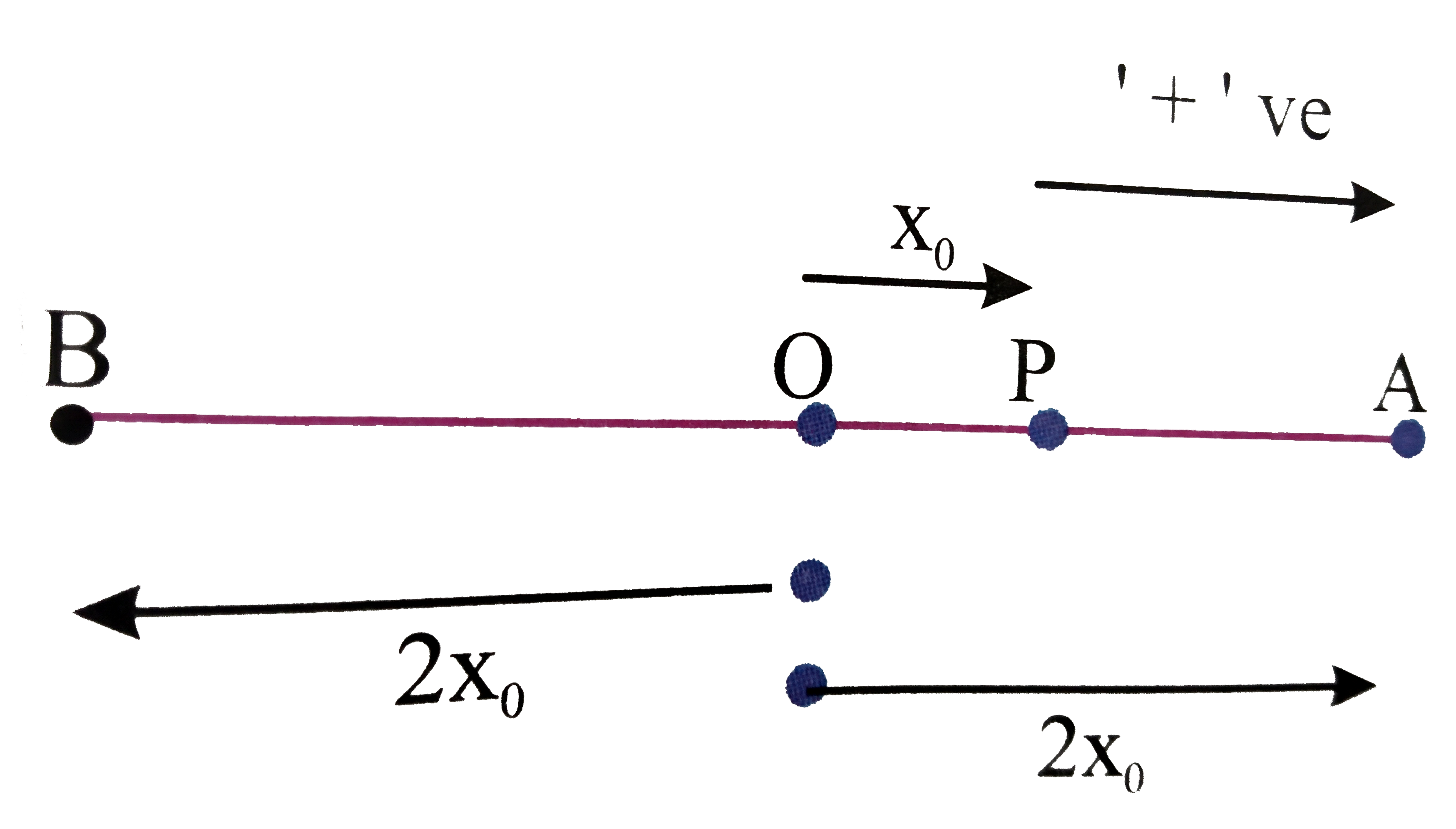
But in the given situation velocity of block at `P` will get....with same magnitude, mass `PA` part of motion will be......Equation of motion `x =- 2x_(0) cos omegat` for `t_(BP) , x = x_(0) rArr x_(0) =- 2x_(0) cos omegat_(BP)`
`rArr omegat_(BP) = ((pi)/(2)+(pi)/(6)) rArr t_(BP) = (4pi)/(6 omega), t_(PB) = t_(BP)`
Net time period `T = 2t_(BP) = (8pi)/(6 omega) = (4)/(3)pi sqrt((m)/(k))`


Treat initial position of block as origin `O`. Had wall not been...motion would have been normal `S.H.M.` with amplitude `2x_(0)` say............point, Given `A` and `b`

But in the given situation velocity of block at `P` will get....with same magnitude, mass `PA` part of motion will be......Equation of motion `x =- 2x_(0) cos omegat` for `t_(BP) , x = x_(0) rArr x_(0) =- 2x_(0) cos omegat_(BP)`
`rArr omegat_(BP) = ((pi)/(2)+(pi)/(6)) rArr t_(BP) = (4pi)/(6 omega), t_(PB) = t_(BP)`
Net time period `T = 2t_(BP) = (8pi)/(6 omega) = (4)/(3)pi sqrt((m)/(k))`

Topper's Solved these Questions
Similar Questions
Explore conceptually related problems
A block is attached to a spring and is placed on a horizontal smooth surface as shown in which spring is unstretched. Now the spring is given an initial compression 2x_(0) an block is released from rest. Collision with the wall PQ are elastic. Write its equation of motion indicating position as a function of time:
A block is attached to a spring and is placed on a horizontal smooth surface as shown in which spring is unstretched. Now the spring is given an initial compression 2x_(0) an block is released from rest. Collision with the wall PQ are elastic. Draw x-t (position-time) graph for one period. Treating position of block in unstretched position of spring as origin
Find the maximum tension in the spring if initially spring at its natural length when block is released from rest.
A block of mass m connected to a spring of stiffness k is placed on horizontal smooth surface. When block is at x=0 , spring is in natural length. The block is also subjected to a force F=(k|x|)/(@) then
In the figure, the block of mass m, attached to the spring of stiffness k is in correct with the completely elastic wall, and the compression in the spring is e. The spring is compressed further by e by displacing the block towards left and is then released. If the collision between the block and the wall is completely eleastic then the time period of oscillation of the block will be
A block of mass m is attached to a spring of force constant k whose other end is fixed to a horizontal surface. Initially the spring is in its natural length and the block is released from rest. The average force acting on the surface by the spring till the instant when the block has zero acceleration for the first time is
A spring block system is placed on a rough horizontal surface having coefficient of friciton mu . The spring is given initial elongation 3mumg//k (where m=mass of block and k=spring constant) and the block is released from rest. For the subsequent motion, find a. Initial acceleration of block b. Maximum compression in spring c. Maximum speed of the block
A block of mass 100 g attached to a spring ofstiffness 100 N//Mis lying on a frictionless floor as shown. The block is moved to compress the spring by 10 cm and released. If the collation with the wall is elastic then find the time period of oscillations.
Figure shown a block P of mass m resting on a smooth horizontal surface, attached to a spring of force constant k which is rigidly fixed on the wall on left side, shown in the figure . At a distance l to the right of the block there is a rigid wall. If block is pushed towards loft so that spring is comparessed by a distance 5l//3 and when released, if will starts its oscillations. If collision of block with the wall is consdered to be perfectly elastic. Find the time period of oscillation of the block.
A small block of mass m is fixed at upper end of a massive vertical spring of spring constant k=(2mg)/(L) and natural length 10L The lower end of spring is free and is at a height L from fixed horizontal floor as shown. The spring is initially unstressed and the spring block system is released from rest in the shown position. Q. Till the blocks reaches its lowest position for the first time, the time duration for which the spring remains compressed is
Knowledge Check
A block is attached to a spring and is placed on a horizontal smooth surface as shown in which spring is unstretched. Now the spring is given an initial compression 2x_(0) an block is released from rest. Collision with the wall PQ are elastic. Write its equation of motion indicating position as a function of time:
A block is attached to a spring and is placed on a horizontal smooth surface as shown in which spring is unstretched. Now the spring is given an initial compression 2x_(0) an block is released from rest. Collision with the wall PQ are elastic. Write its equation of motion indicating position as a function of time:
A
`x =- 2x_(0) cos omegat 0 lt t lt (T)/(2)`
B
`x =- 2x_(0) cos (omegat +(2pi)/(3))(T)/(2) lt t lt T`
C
`x =- x_(0) cos omega t 0 lt t lt (T)/(2)`
D
`x =- 2x_(0) cos (omegat +(pi)/(3))(T)/(2) lt t lt T`
A block is attached to a spring and is placed on a horizontal smooth surface as shown in which spring is unstretched. Now the spring is given an initial compression 2x_(0) an block is released from rest. Collision with the wall PQ are elastic. Draw x-t (position-time) graph for one period. Treating position of block in unstretched position of spring as origin
A block is attached to a spring and is placed on a horizontal smooth surface as shown in which spring is unstretched. Now the spring is given an initial compression 2x_(0) an block is released from rest. Collision with the wall PQ are elastic. Draw x-t (position-time) graph for one period. Treating position of block in unstretched position of spring as origin
A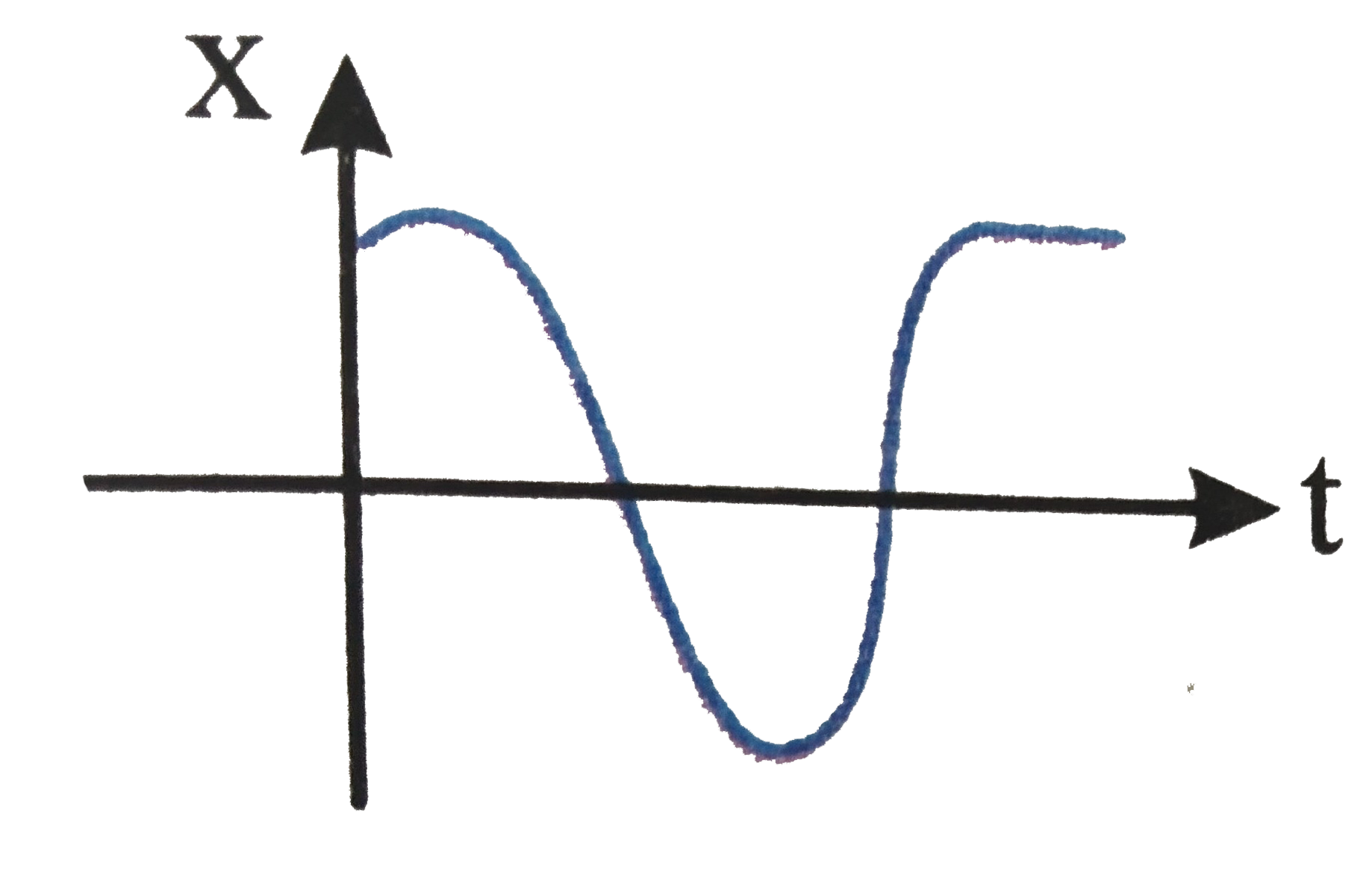

B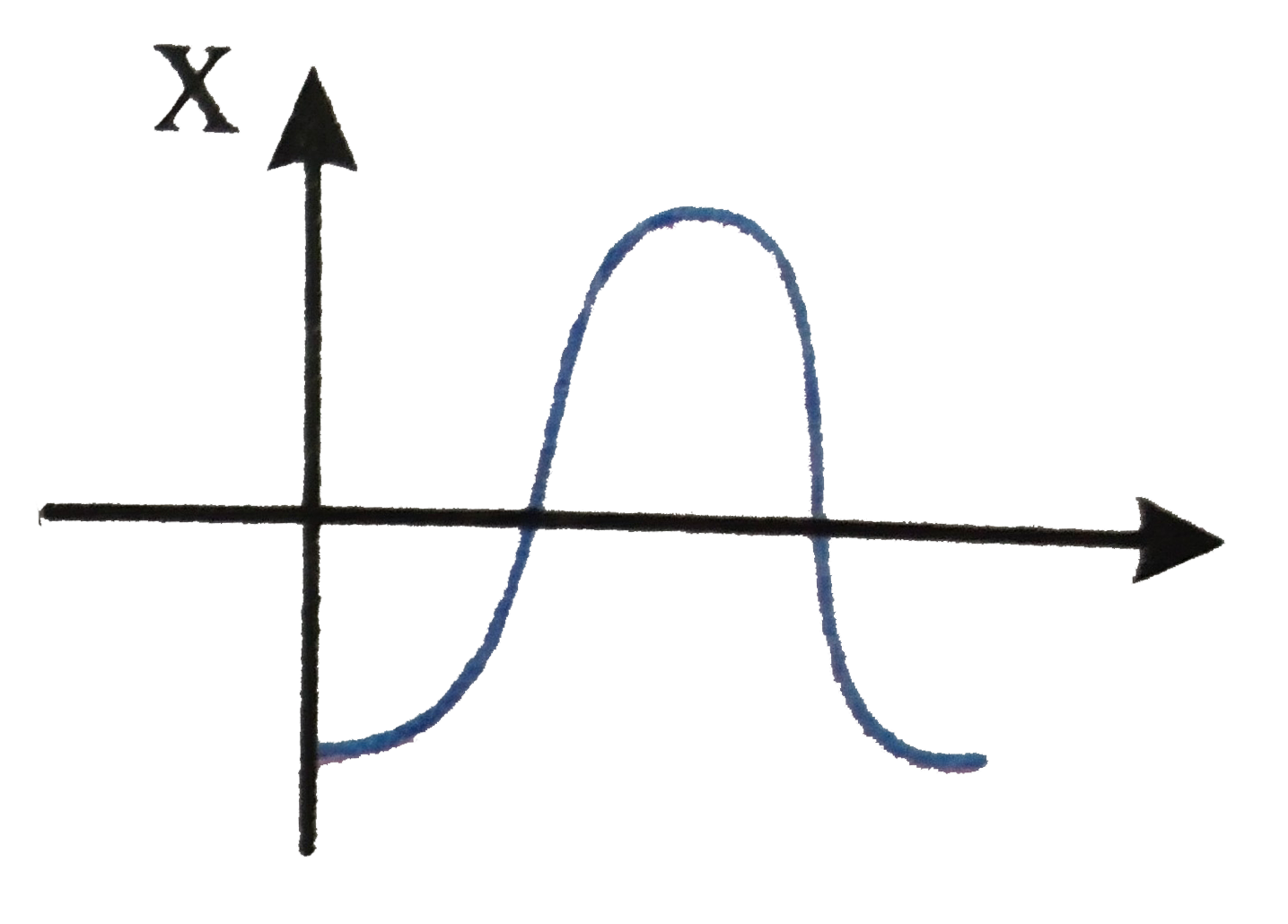

C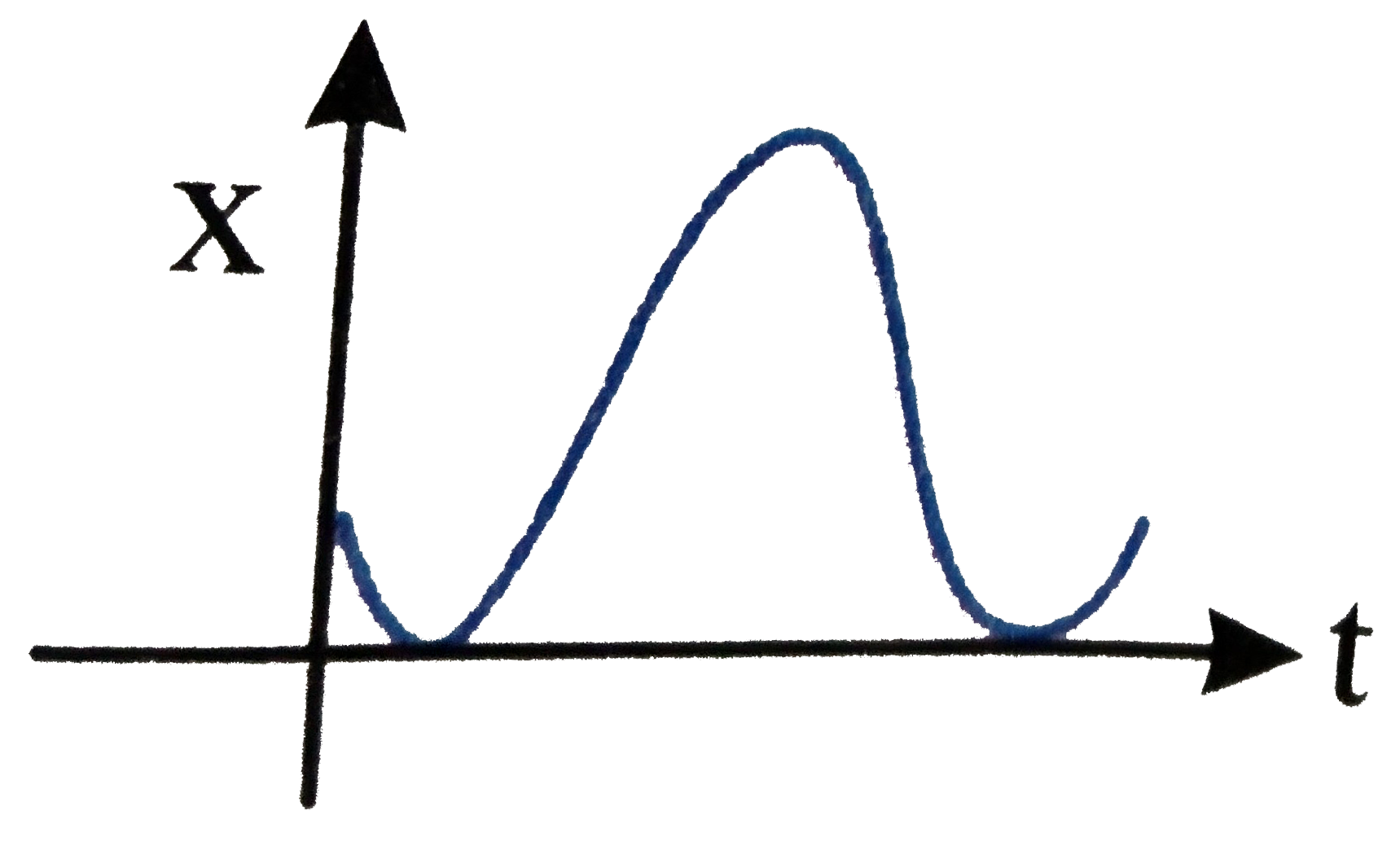

D

Find the maximum tension in the spring if initially spring at its natural length when block is released from rest.
Find the maximum tension in the spring if initially spring at its natural length when block is released from rest.
A
mg
B
mg/2
C
3mg/2
D
2 mg